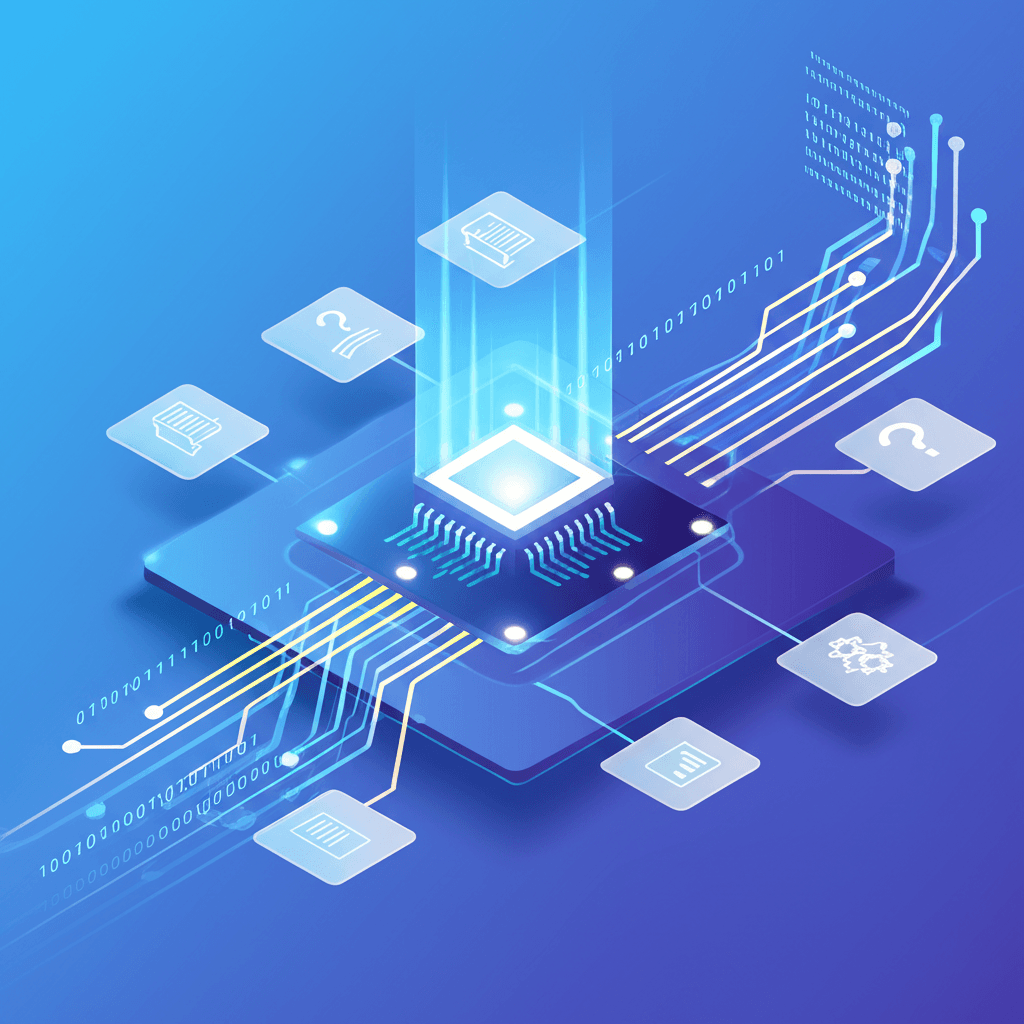Databricks launches Agent Bricks, empowering businesses to deploy production AI agents.
Unlocking enterprise AI: Databricks automates AI agent creation, ensuring quality, cost, and rapid deployment with your data.
June 12, 2025

Databricks has significantly expanded its suite of tools for enterprise artificial intelligence with the introduction of Agent Bricks, a new automated system designed to empower businesses to create, deploy, and manage high-quality AI agents tailored to their specific data and operational needs.[1][2][3] This launch, announced at the company's Data + AI Summit, aims to simplify the often complex and costly journey of bringing AI agent prototypes into full-scale production by automating key aspects of the development lifecycle, including data generation, benchmarking, and optimization.[1][4] Agent Bricks, currently available in beta, allows users to define an agent's task with a high-level description, connect their enterprise data, and then leverages novel research techniques from Databricks' Mosaic AI Research to handle the intricate processes of building and refining the agent.[1][2]
A core challenge Agent Bricks seeks to address is the difficulty enterprises face in moving AI agents from experimental stages to reliable, production-ready applications.[4] Historically, this transition has been fraught with hurdles such as ensuring consistent quality, managing costs effectively, and integrating agents with existing enterprise systems and governance frameworks.[1][4] Many organizations have relied on subjective "gut checks" or manual trial-and-error methods to evaluate agent performance, leading to inconsistencies, high expenses, and difficulties in scaling.[1][4] Agent Bricks confronts these issues by automating the generation of domain-specific synthetic data that mirrors a customer's actual data, thereby enhancing the agent's learning and performance on relevant tasks.[1][2][4] It also automatically creates task-specific evaluation benchmarks and employs LLM (large language model) judges to assess output quality, providing objective and continuous evaluation.[1][2] This automated workflow allows businesses to optimize agents for both cost and quality from the outset, selecting the iteration that best meets their specific balance of these factors.[1][2] Built-in governance and enterprise controls further streamline the path to production, eliminating the need to stitch together disparate tools.[1]
The new offering is designed to cater to a range of common enterprise use cases. These include Information Extraction Agents capable of processing documents like emails, PDFs, and reports to pull out structured data such as names, dates, and product details, without needing pre-labeled training data.[1][2][5][6] Knowledge Assistant Agents aim to provide fast, accurate answers grounded in an organization's internal data, mitigating the issue of vague or incorrect responses often encountered with generic chatbots.[1][2][4][6] Agent Bricks also supports the creation of Custom LLM Agents for tailored text transformations, such as generating marketing content aligned with brand standards, and Multi-Agent Supervisor capabilities for orchestrating systems where multiple specialized agents collaborate on complex tasks.[1][2][3][6] Early adopters, including companies like Lippert, Flo Health, AstraZeneca, North Dakota University System, and Hawaiian Electric, have reported positive outcomes, such as improved accuracy, reduced manual effort, and faster deployment times.[1][5] For instance, Flo Health noted that Agent Bricks enabled them to significantly improve medical accuracy compared to standard commercial LLMs by leveraging their specialized health data.[1] Similarly, AstraZeneca highlighted the ability to parse hundreds of thousands of clinical trial documents and extract structured data in under an hour without writing code.[5]
Complementing the launch of Agent Bricks, Databricks also unveiled MLflow 3.0, a significant update to its open-source AI lifecycle management platform.[4][3][6] MLflow 3.0 has been redesigned to specifically address the challenges of generative AI development, including robust tracing capabilities, LLM judges for quality assessment, human feedback collection mechanisms, application versioning, and prompt management.[7][8] These features are intended to provide comprehensive observability and governance for AI agents and other generative AI applications, even those deployed outside of the Databricks environment.[7][8] The platform aims to unify the development lifecycle for all types of AI workloads—generative AI, traditional machine learning, and deep learning—offering consistent workflows and standardized governance.[7] Key enhancements in MLflow 3.0 include prompt versioning for tracking iterations in prompt engineering, hierarchical observability to monitor complex agent flows, and tighter integration with Databricks Unity Catalog for enhanced control and scalability.[9][8] Furthermore, Databricks announced serverless GPU support, now in beta, to simplify the fine-tuning of models and the execution of deep learning workloads by removing the need for customers to manage the underlying GPU infrastructure.[2][4][3][8]
The introduction of Agent Bricks and its supporting ecosystem components signifies Databricks' strategic push to make sophisticated AI agent technology more accessible and practical for enterprises. By focusing on automation, data-centricity, and production readiness, Databricks aims to lower the barriers to AI adoption, allowing organizations to leverage their own data to build powerful, cost-effective, and trustworthy AI agents.[1][2] This move addresses a critical market need, as businesses increasingly look to AI agents to automate tasks, extract insights from data, and improve operational efficiency.[10][11][12][13] The emphasis on grounding agents in enterprise data is particularly crucial, as the quality and accessibility of this data are often the primary determinants of an AI system's success.[10] The ability to generate synthetic data tailored to specific domains, as offered by Agent Bricks, can help overcome challenges related to data scarcity or the difficulty of labeling large datasets.[4] As the AI landscape continues to evolve rapidly, tools that simplify development, ensure quality, and manage costs will be vital for enterprises seeking to harness the transformative potential of AI agents.[14][15][16][17][18] Databricks' latest offerings position it as a key enabler in this evolving ecosystem, providing a more unified and streamlined approach to building and deploying production-grade AI solutions.[4][5][9]
Sources
[6]
[9]
[10]
[11]
[12]
[13]
[14]
[15]
[16]
[17]
[18]